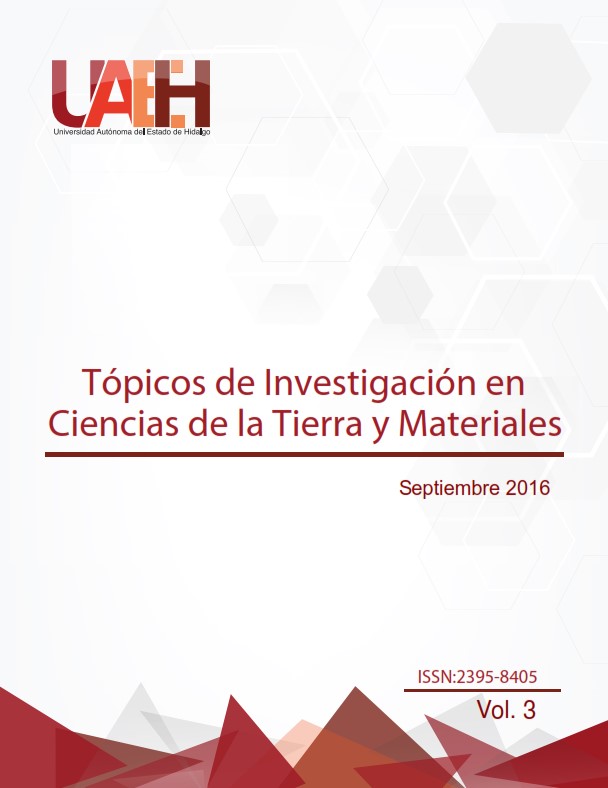Emplacement of magmatic dikes and their tectonic interpretation: examples in tertiary rocks of the Sierra de Pachuca
Abstract
Magmatic dikes are intrusions that penetrate and displace the host rock, form conduits connecting with the magmatic chamber, and get emplaced into the upper crust through ascending flows. In this work, dikes are considered hydraulic tension fractures in the host rock, infilled with magma, and oriented perpendicularly to the minimum compressive stresses, s3, following Anderson’s theory. Consequently, a dike swarm of a single generation defines the stress field map associated with the tectonic regime that prevailed at the time of emplacement. Based on the structural attitude of outcropping diabase and granitoid dikes in Sierra de Pachuca, its geometry ant the orientation of the stress field in the upper crust are inferred (s1, s2, s3). Despite the lack of radiometric ages for the different lithologic units of the Sierra de Pachuca, it is widely considered that these rocks were formed during Oligocene to Pleistocene times. Nevertheless, crosscutting relations among the host rock, the brittle structures, and dike emplacement, allow the establishment of the relative sequence of geologic events. Results indicate that the emplacement of dikes and brittle deformation are tectonically associated.
Downloads
References
Gregg, and Rosaly M. C. Lopes, Cambridge University Press, New York, 2013, pp. 32-54.
[2]. E. Anderson: The Dynamics of Faulting and Dyke Formation with Applications to Britain,1951, Oliver and Boyd, Edimburgh, 206 pp.1-8
[3]. J. Gregory McHone, Mafic dikes suites within Mesozoic igneous provinces of New England and Atlantic Canada: Geological Society of America – Special Paper, 1992, 268, pp. 1-11.
[4]. J. Weertman, The stopping of a rising, liquid-filled ceack inn the Earth´s crust by a freely slipping horizontal joint: Journal of Geophysical Research, 1980, 85, pp. 967-976.
[5]. D. T. Secor, D. D. Pollard, On the Stability of open hydraulic fractures in the Earth´s crust: Geophysical Research Letters, 1975, 2, pp. 510-513.
[6]. A, R. Geyne, Carl Fries, Jr., Kenneth Segerstrom, R. F. Black, and I.F. Wilson: Geology and Mineral Deposits of the Pachuca-Real del Monte District, State of Hidalgo, Mexico, 1963, Consejo
de Recursos Naturales no Renovables, Publication 5E, 205 pp.
[7]. J.C. Escamilla-Casas, L.E. Ortíz-Henández, A. Blanco-Piñón, E. Cruz-Chávez, S.P. Ambrocio- Cruz, Interpretación de la Cinemática de las Fallas Neo-Tectónicas Frágiles del Sector Sureste de
la Sierra de Pachuca: Tópicos de Investigación en Ciencias de la Tierra y Materiales, 2014, Vol. 1, Tópico II, pp. 67-75.












